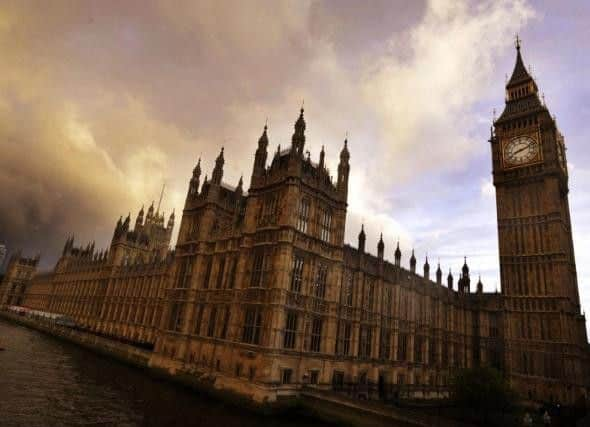Brexit: How will 'indicative votes' work, and what will MPs consider?
How it works:
MPs took the historic step of seizing control of the Commons order paper in order to impose their own views on what sort of Brexit the UK should pursue.
Under the plan put forward by Conservative Sir Oliver Letwin, at 2pm today normal proceedings in the House stopped and MPs began a debate on a series of motions setting out alternatives to Prime Minister Theresa May’s deal.


Advertisement
Hide AdAdvertisement
Hide AdAt 7pm this evening, rather than dividing into the two Commons voting lobbies to indicate whether they say Aye or No to a single proposition, they will troop through the No lobby to collect a single ballot paper.
That ballot will carry a list of Brexit plans; 16 were proposed by MPs and parties last night and were whittled down to eight by the Commons Speaker.
Against each option, MPs will tick a box - either Yes or No - indicating whether they support that proposal being taken forward. They can choose as many of the suggestions as they like.
The ballot will not be secret, so anyone will be able to look up which Brexit plans their MP was willing to support after the count. The result should be known at around 9pm.
On Monday, time will be set aside for MPs to consider the options that receive the greatest amount of support.
If a single proposal emerges, it will then be for the government – which says it cannot guarantee to respect the outcome – to respond.
The options:
B) No deal - moved by Tory MP John Baron: Endoring the UK’s exit from the EU without a Brexit deal on 12 April
D) Common market 2.0 - moved by Tory MP Nick Boles: Proposes that the UK joins the European Free Trade Association (Efta) and European Economic Area (EEA), maintaining membership of the EU single market. It also proposes a “comprehensive customs union” to ensure no hard border in Ireland until a new trade deal with the EU is agreed
Advertisement
Hide AdAdvertisement
Hide AdH) Efta and EEA - moved by Tory MP George Eustice: Similar to Common market 2.0, but without a customs union
J) Customs union - moved by Tory MP Ken Clarke: Proposes a “permanent and comprehensive UK-wide customs union with the EU”
K) Labour's alternative plan - moved by Labour leader Jeremy Corbyn: Labour’s Brexit plan calls for a comprehensive customs union, but with the UK having a say on EU trade deals. It also requires close alignment with the single market, matching of new EU rights and protections, participation in EU agencies and funding programmes, and cooperation on security and law enforcement including the European Arrest Warrant
L) Revocation to avoid no-deal - moved by SNP MP Joanna Cherry: If there is no agreed Brexit deal within two days of the UK’s exit from the EU, a vote would be held among MPs to ask if they endorse a no-deal scenario. If not, the Prime Minister would be required to revoke Article 50, halting Brexit
M) Confirmatory public vote - moved by Labour MP Dame Margaret Beckett: Any Brexit deal agreed by parliament would have to be put to the people in a referendum
O) Contingent preferential arrangements - moved by Tory MP Marcus Fysh: In case of a no-deal Brexit, the government would be required to seek preferential trade arrangements with the EU
